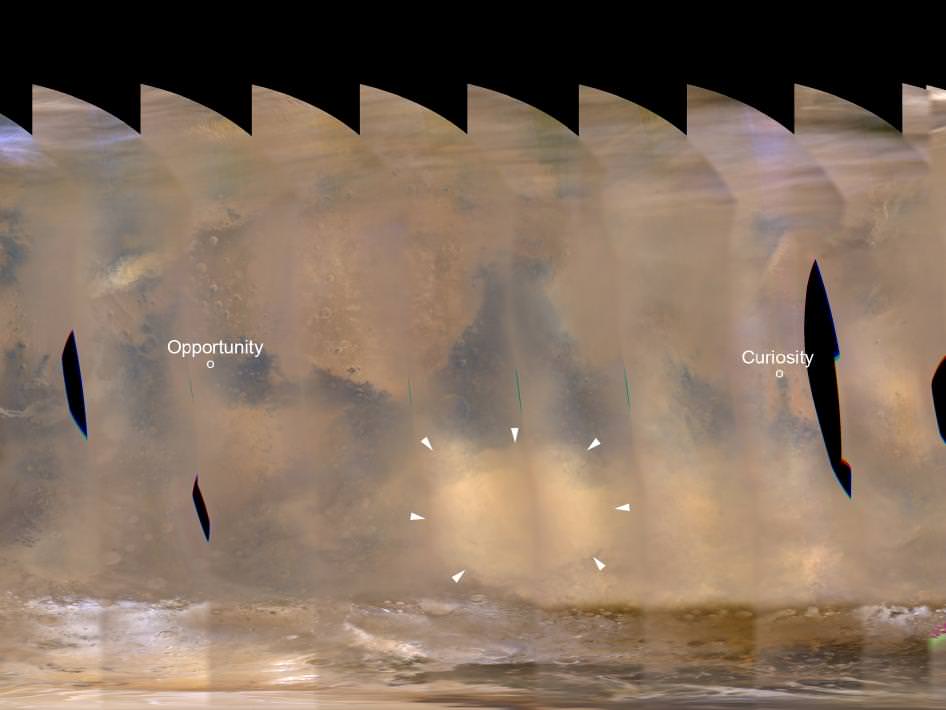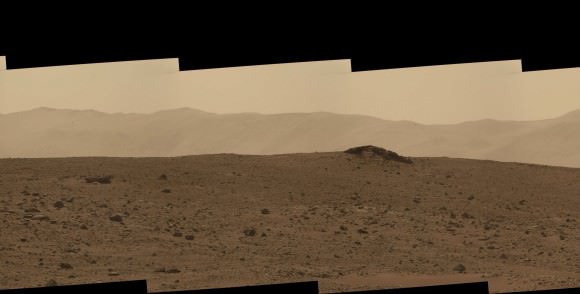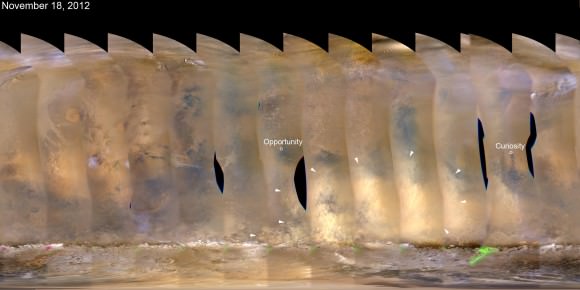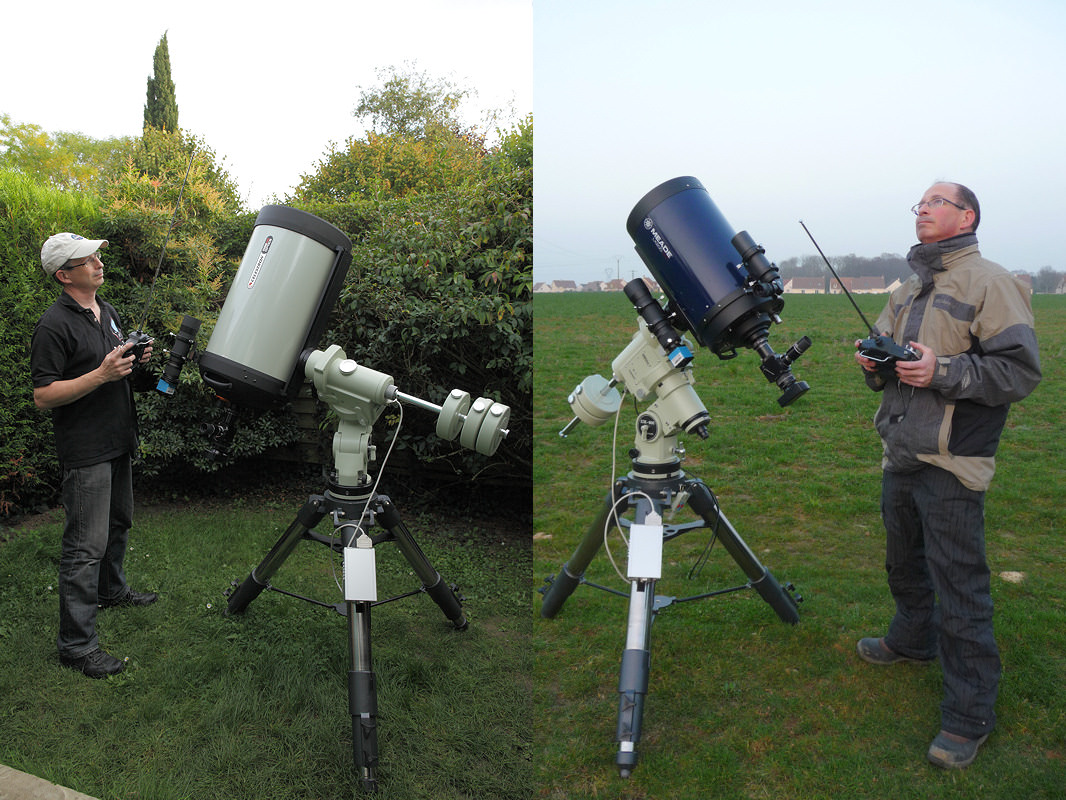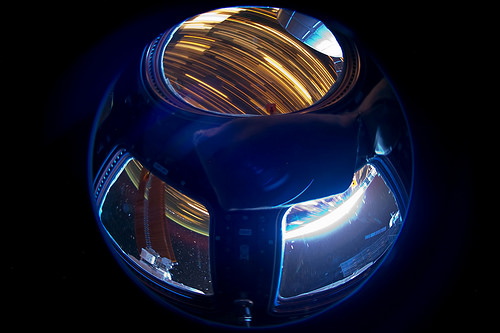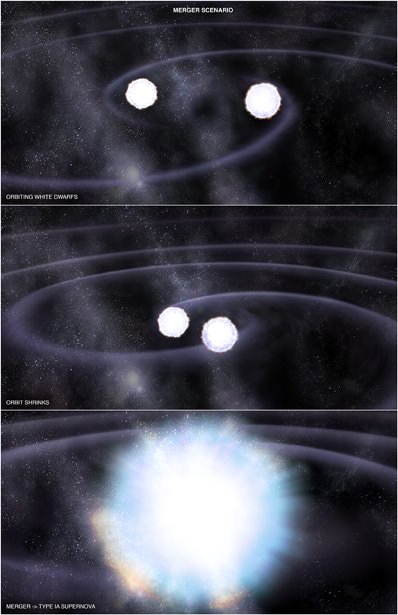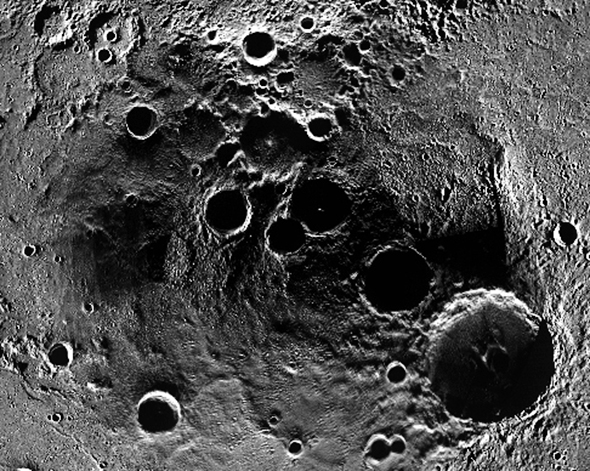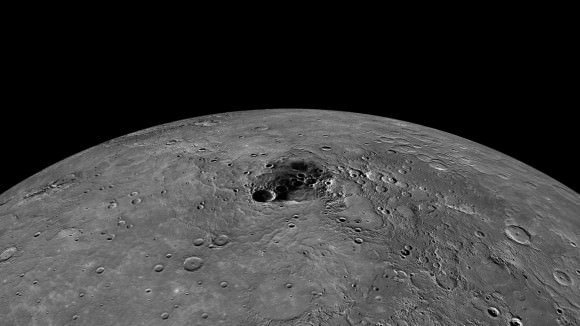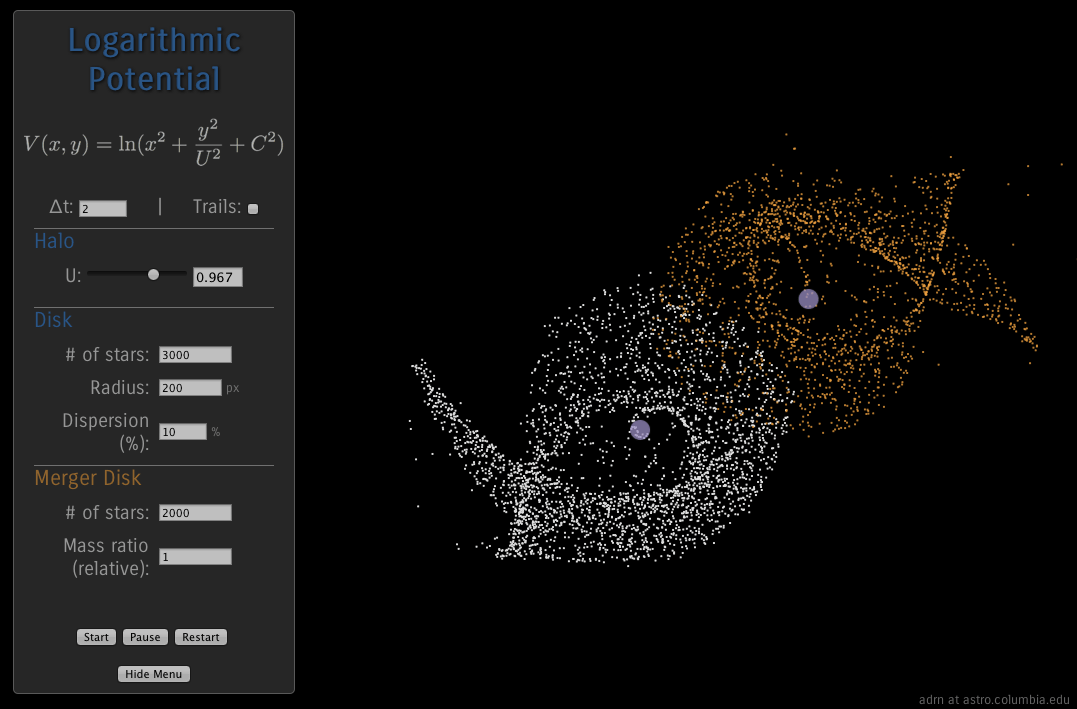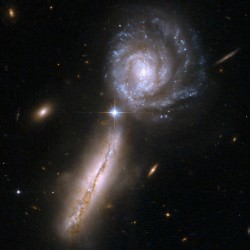A regional dust storm visible in the southern hemisphere of Mars in this nearly global mosaic of observations made by the Mars Color Imager on NASA’s Mars Reconnaissance Orbiter on Nov. 25, 2012, has contracted from its size a week earlier. Image credit: NASA/JPL-Caltech/MSSS
Good news for the spacecraft sitting on or orbiting Mars: a dust storm on the Red Planet that looked as though it could spread around the entire planet now appears to be abating rather than going global, NASA says.
“During the past week, the regional storm weakened and contracted significantly,” said Bruce Cantor of Malin Space Science Systems, San Diego. Cantor uses the Mars Color Imager camera on NASA’s Mars Reconnaissance Orbiter to monitor storms on the Red Planet.
Recent images and data from the Environmental Monitoring Station (REMS) on the Curiosity rover have also shown a hazy atmosphere and air pressure changes in the vicinity of Gale Crater.
Part of gigantic panorama from Curiosity, showing an increasingly hazy view off in the distance, likely because of a dust storm. Credit: NASA/JPL/MSS, with image editing by Stuart Atkinson. See the full panorama here.
“We are getting lots of good data about this storm,” said Mark Richardson of Ashima Research, Pasadena, California, a co-investigator both on REMS and on the Mars Reconnaissance Orbiter’s Mars Climate Sounder instrument, which has been detecting widespread effects of the current storm on atmospheric temperatures.
Here’s a look at the growing dust storm from the Mars Color Imager on NASA’s Mars Reconnaissance Orbiter on Nov. 18, 2012 to compare with the lead image:
Credit:NASA/JPL-Caltech/MSSS
Researchers anticipate that the unprecedented combination of a near-equatorial weather station at ground level, and daily orbital observations during Mars’ dust-storm season, may provide information about why some dust storms grow larger than others.
This is good information to have for any potential future human visitors to Mars.
Source: JPL

